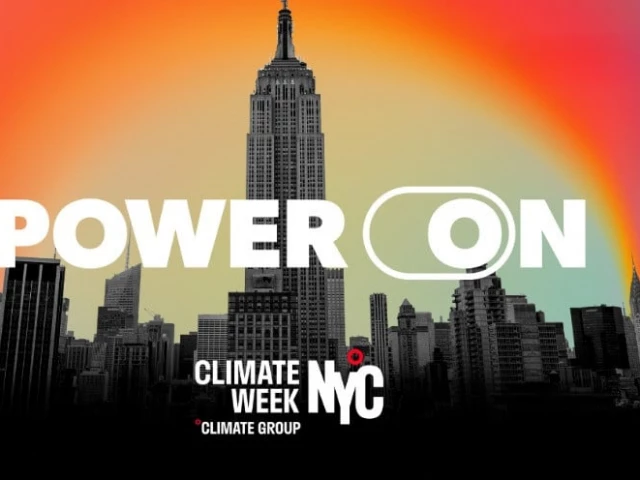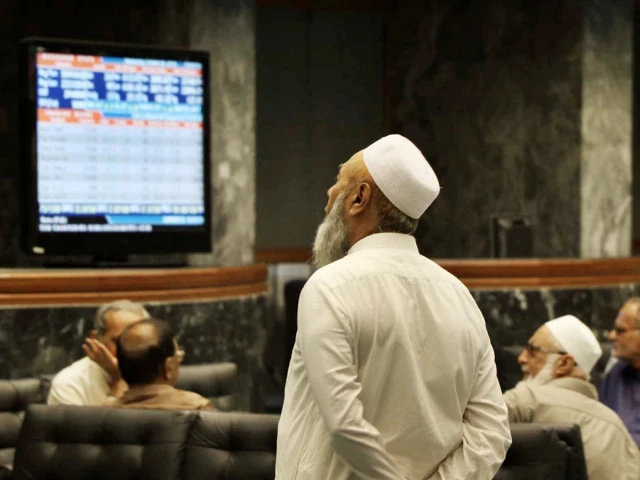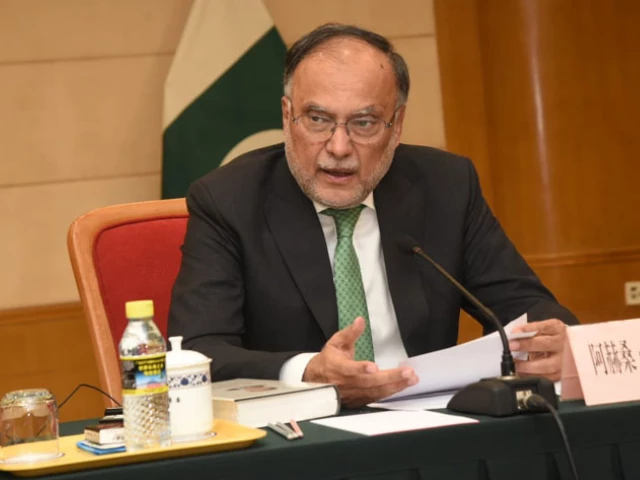Business
NYC readies for record Climate Week | The Express Tribune

LONDON/WASHINGTON:
When Climate Week kicks off on Sunday in New York City, it will mark the event’s biggest year yet — with organisers reporting a record number of companies participating and more events than ever to attend.
Almost no one had expected this response in a year that has seen the event’s host country — and the world’s wealthiest — set to a climate-denying agenda of boosting fossil fuels, rolling back pollution regulation and defunding US science and climate action.
Organisers of Climate Week even wondered, “Would people show up?” said Climate Group Chief Executive Officer Helen Clarkson.
“Actually, there’s huge enthusiasm for it,” Clarkson said.
Held alongside the UN General Assembly since 2009, this year’s Climate Week showcases more than 1,000 events — including presentations, panel discussions and swanky cocktail parties — hosted by environmental nonprofits, companies and philanthropists hoping to generate deals and discussion around protecting the planet.
Last year’s Climate Week, by comparison, saw about 900 events.
The boost in engagement has come “precisely as an antidote to the current US administration’s attitude toward climate change,” former UN climate chief Christiana Figueres told Reuters in an interview.
Ten years ago, Figueres helped to craft the 2015 Paris Treaty under which countries agreed to hold the global temperatures to within 2 degrees Celsius of the preindustrial average while aiming for a more ambitious target of 1.5 degrees Celsius.
But while national governments were pushing the climate agenda 10 years ago, Figueres said, the situation has since drastically changed.
“The pull now is coming from stakeholders, from the real economy, from market forces that are pulling forward,” Figueres said.
The Swiss carbon capture firm Climeworks has booked itself for nearly four times the number of events this year compared with last year, after the company in February raised $162 million toward improving its technology and growing the company, Co-Chief Executive Christoph Gebald said.
“We’re continuing to see demand increase for carbon removals,” Gebald said. For Climate Week, “the level of interest from the most senior levels of companies is higher than ever.”
Many major fossil fuel companies and some oil-dependent governments, opens new tab, however, have made moves toward reversing previous climate commitments.
A different world
With the UN General Assembly meeting at the same time, Climate Week has developed into a major networking opportunity for CEOs and investors to rub elbows with visiting world leaders.
The Assembly will take up the climate change issue on Wednesday, when Secretary-General Antonio Guterrez hosts a special “climate summit.” Many leaders are expected to announce new climate targets, or Nationally Determined Contributions.
Neither the US nor the European Union will be among them, despite having acted as leaders of the global climate agenda in the past. Instead, China, COP30 host Brazil and other fast-developing nations have taken a more active role in setting the agenda.
China’s emissions-reduction plan could also be announced any day but may underwhelm on ambition, climate sources said.
Meanwhile, the European Union is still struggling to reach agreement about how ambitious those targets should be — raising tensions about whether Brazil’s COP30 summit starting in only seven weeks will succeed.
More than half of the world’s biggest companies have pledged to reach net-zero emissions by mid-century, in line with the world’s climate goal, according to data from the non-profit Net-Zero Tracker.
But according to an analysis by the TPI Global Climate Transition Centre at the London School of Economics and Political Science, a whopping 98% of companies have shared no plans for aligning their spending with those commitments.
“The challenge for New York Climate Week and beyond is to ensure that individuals and institutions come together in new ways to reimagine how we can cooperate against common threats,” said Rajiv Shah, president of The Rockefeller Foundation.
A survey released on Thursday by the foundation that questioned 36,348 people worldwide estimated that most of the world’s population — a full 86% — believed international cooperation was crucial for climate action.
Business
Private sector data: Over 2 lakh private companies closed in 5 years; govt flags monitoring for suspicious cases – The Times of India

NEW DELHI: The government on Monday said that over the past five years, more than two lakh private companies have been closed in India.According to data provided by Minister of State for Corporate Affairs Harsh Malhotra in a written reply to the Lok Sabha, a total of 2,04,268 private companies were shut down between 2020-21 and 2024-25 due to amalgamation, conversion, dissolution or being struck off from official records under the Companies Act, 2013.Regarding the rehabilitation of employees from these closed companies, the minister said there is currently no proposal before the government, as reported by PTI. In the same period, 1,85,350 companies were officially removed from government records, including 8,648 entities struck off till July 16 this fiscal year. Companies can be removed from records if they are inactive for long periods or voluntarily after fulfilling regulatory requirements.On queries about shell companies and their potential use in money laundering, Malhotra highlighted that the term “shell company” is not defined under the Companies Act, 2013. However, he added that whenever suspicious instances are reported, they are shared with other government agencies such as the Enforcement Directorate and the Income Tax Department for monitoring.A major push to remove inactive companies took place in 2022-23, when 82,125 companies were struck off during a strike-off drive by the corporate affairs ministry.The minister also highlighted the government’s broader policy to simplify and rationalize the tax system. “It is the stated policy of the government to gradually phase out exemptions and deductions while rationalising tax rates to create a simple, transparent, and equitable tax regime,” he said. He added that several reforms have been undertaken to promote investment and ease of doing business, including substantial reductions in corporate tax rates for existing and new domestic companies.
Business
Pakistan’s Textile Exports Reach Historic High in FY2025-26 – SUCH TV

Pakistan’s textile exports surged to $6.4 billion during the first four months of the 2025-26 fiscal year, marking the highest trade volume for the sector in this period.
According to the Pakistan Bureau of Statistics (PBS), value-added textile sectors were key contributors to the growth.
Knitwear exports reached $1.9 billion, while ready-made garments contributed $1.4 billion.
Significant increases were observed across several commodities: cotton yarn exports rose 7.74% to $238.9 million, and raw cotton exports jumped 100%, reaching $2.6 million from zero exports the previous year.
Other notable gains included tents, canvas, and tarpaulins, up 32.34% to $53.48 million, while ready-made garments increased 5.11% to $1.43 billion.
Exports of made-up textile articles, excluding towels and bedwear, rose 4.17%, totaling $274.75 million.
The report also mentioned that the growth in textile exports is a result of improved global demand and stability in the value of the Pakistani rupee.
Business
Peel Hunt cheers ‘positive steps’ in Budget to boost London market and investing

UK investment bank Peel Hunt has given some support to under-pressure Chancellor Rachel Reeves over last week’s Budget as it said efforts to boost the London market and invest in UK companies were “positive steps”.
Peel Hunt welcomed moves announced in the Budget, such as the stamp duty exemption for shares bought in newly listed firms on the London market and changes to Isa investing.
It comes as Ms Reeves has been forced to defend herself against claims she misled voters by talking up the scale of the fiscal challenge in the run-up to last week’s Budget, in which she announced £26 billion worth of tax rises.
Peel Hunt said: “Following a prolonged period of pre-Budget speculation, businesses and investors now have greater clarity from which they can start to plan.
“The key measures were generally well received by markets, particularly the creation of additional headroom against the Chancellor’s fiscal rules.
“Initiatives such as a stamp duty holiday on initial public offerings (IPOs) and adjustments to the Isa framework are intended to support UK capital markets and encourage investment in British companies.
“These developments, alongside the Entrepreneurship in the UK paper published simultaneously, represent positive steps toward enhancing the UK’s attractiveness for growth businesses and long-term investors.”
Ms Reeves last week announced a three-year stamp duty holiday on shares bought in new UK flotations as part of a raft of measures to boost investment in UK shares.
She also unveiled a change to the individual savings account (Isa) limit that lowers the cash element to £12,000 with the remaining £8,000 now redirected into stocks and shares.
But the Chancellor also revealed an unexpected increase in dividend tax, rising by 2% for basic and higher rate taxpayers next year, which experts have warned “undermines the drive to increase investing in Britain”.
Peel Hunt said the London IPO market had begun to revive in the autumn, although listings activity remained low during its first half to the end of September.
Firms that have listed in London over recent months include The Beauty Tech Group, small business lender Shawbrook and tinned tuna firm Princes.
Peel Hunt added that deal activity had “continued at pace” throughout its first half, with 60 transactions announced across the market during that time and 10 active bids for FTSE 350 companies, as at the end of September.
Half-year results for Peel Hunt showed pre-tax profits jumped to £11.5 million in the six months to September 30, up from £1.2 million a year earlier, as revenues lifted 38.3%.
Peel Hunt said its workforce has been cut by nearly 10% since the end of March under an ongoing savings drive, with full-year underlying fixed costs down by around £5 million.
Steven Fine, chief executive of Peel Hunt, said: “The second half has started strongly, with the group continuing to play leading roles across both mergers and acquisitions and equity capital markets mandates.”
-

 Sports1 week ago
Sports1 week agoWATCH: Ronaldo scores spectacular bicycle kick
-

 Entertainment1 week ago
Entertainment1 week agoWelcome to Derry’ episode 5 delivers shocking twist
-

 Politics1 week ago
Politics1 week agoWashington and Kyiv Stress Any Peace Deal Must Fully Respect Ukraine’s Sovereignty
-

 Business1 week ago
Business1 week agoKey economic data and trends that will shape Rachel Reeves’ Budget
-

 Tech6 days ago
Tech6 days agoWake Up—the Best Black Friday Mattress Sales Are Here
-

 Politics1 week ago
Politics1 week ago53,000 Sikhs vote in Ottawa Khalistan Referendum amid Carney-Modi trade talks scrutiny
-

 Fashion1 week ago
Fashion1 week agoCanada’s Lululemon unveils team Canada kit for Milano Cortina 2026
-

 Tech1 day ago
Tech1 day agoGet Your Steps In From Your Home Office With This Walking Pad—On Sale This Week



1729471601-0/image-(8)1729471601-0-640x480.webp)








